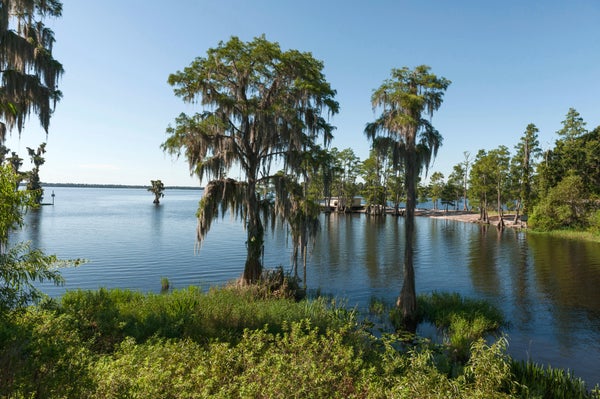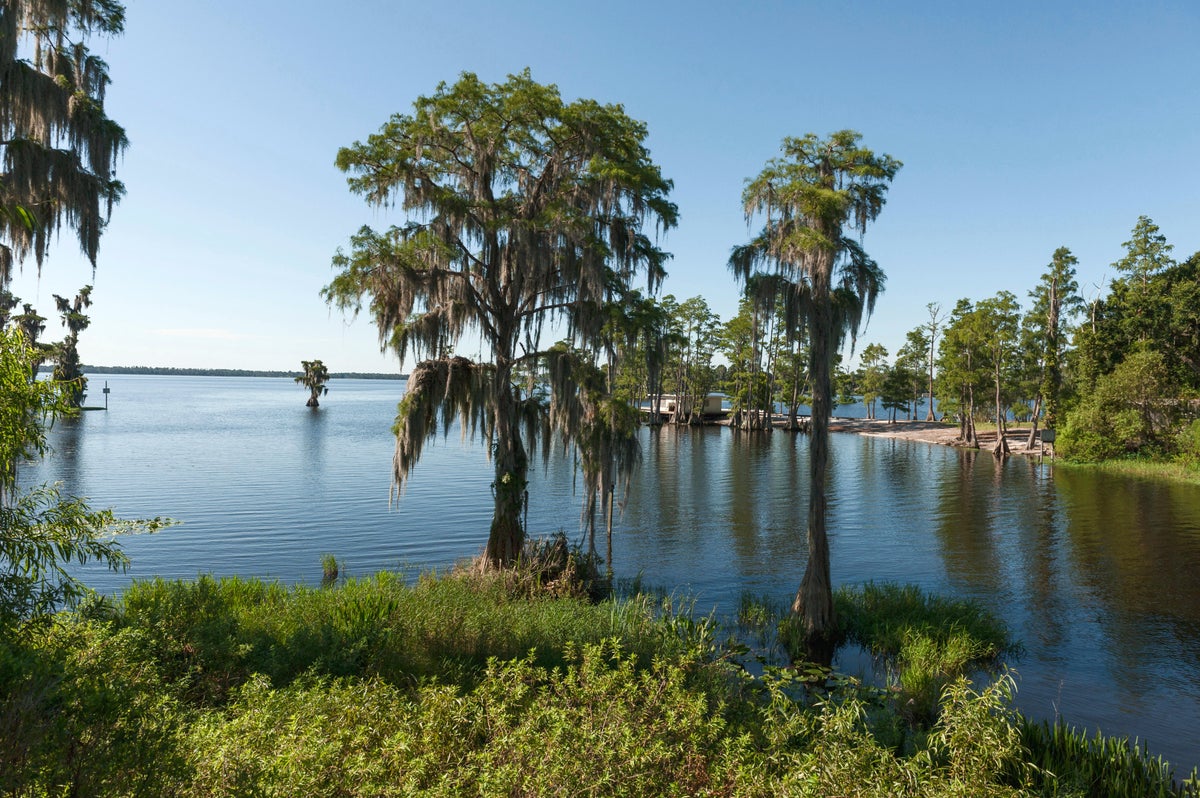November 15, 2024
3 min read
Climate and Conservation Ballot Measures Approved Even in Places Trump Won
Four counties in Florida that voted for Trump also voted to conserve open space, reduce flood damage and protect habitat

A Cypress Lake Cove in Lake County, Central Florida.
Stephen Vincent/Alamy Stock Photo
CLIMATEWIRE | President-elect Donald Trump won nearly 70 percent of the vote in Florida’s Clay County last week.
Another big winner in the Republican county near Jacksonville was a ballot measure that will increase taxes by $45 million to fund projects that will improve water quality, protect wildlife and reduce damage from floods.
Nearly two dozen conservation- and climate-related ballot initiatives were approved on Election Day in states from Florida and Georgia to California and Colorado. The measures aim to expand parks, preserve natural areas and prepare communities for the impacts of climate change.
On supporting science journalism
If you’re enjoying this article, consider supporting our award-winning journalism by subscribing. By purchasing a subscription you are helping to ensure the future of impactful stories about the discoveries and ideas shaping our world today.
“This is not a partisan issue,” said Pegeen Hanrahan, associate director of conservation finance at the Trust for Public Land, a non-profit that advocates for conservation- and climate-focused ballot measures. “We see wins in red states and in blue states.”
Many of the initiatives passed in Democratic areas such as Denver, which approved a measure to install and improve air conditioning in public schools. The city saw saw record-breaking temperatures this fall. Several measures won the support of voters in states and counties that backed Trump, who has called climate change a “hoax” and has promised to scrap pollution regulations and President Joe Biden’s climate policies and programs.
The success reflects a growing recognition among residents and officials that global warming poses a rising risk to people, property, budgets and tax bases — and will get worse absent intervention.
“Everybody, regardless of their political leanings, understands that and is willing to make these kinds of investments,” said Justin Marlowe, who directs the Center for Municipal Finance at the University of Chicago. “It’s an economic development strategy.”
Hanrahan said her organization tries to address “the impacts of climate change” through ballot measures. “In some places we don’t discuss the direct cause of those impacts,” Hanrahan said.
The Clay County measure was listed on the ballot as the Land Conservation Referendum to Protect Water Quality, Wildlife Habitat, Forests and Farms.
Four measures were approved by Florida counties that backed Trump.
In Lake County, near Orlando, voters passed a measure to preserve natural areas, improve water quality and protect wildlife habitat. The county will pay for the work by issuing $50 million in bonds that it will pay back through an increase in property taxes that will cost the average homeowner $21 a year for 20 years, according to a Trust for Public Land analysis.
The Clay County measure has similar aims and authorizes the county to sell bonds that could cost the average homeowner up to $33 per year, according to the trust. A referendum in Osceola County south of Orlando authorizes $70 million in bonds to renew a land conservation program.
Voters in Martin County north of Palm Beach approved a measure with similar objectives. But instead of selling bonds, the county will raise its sales tax by half a cent for the next decade to raise $183 million.
None of the Florida measures mentions climate change. And that’s intentional.
“We’re not out there talking about climate change a lot,” said David Weinstein, western conservation finance director at the land trust. “We’re talking about the worst effects of climate change, and that’s what resonates with voters.”
Nonetheless, the ballot measures aim to fund projects capable of reducing greenhouse gas emissions, preparing communities for climate impacts — or both.
“The main benefit of doing land protection for climate is that obviously natural lands absorb carbon, absorb flood waters [and] create a habitat that is healthier for movement of wildlife,” said Hanrahan of the land trust.
Other approved ballot measures aim to reduce wildfire risk in Colorado, preserve forests in Illinois, and fund parks, community centers and more in New Mexico.
California voters approved four related ballot measures including one that mentions “climate” multiple times. Proposition 4 earned 58 percent of the vote and authorizes the state to issue $10 billion in bonds to finance projects aimed at preventing wildfires, providing safe drinking water and protecting California “in the face of significant threats from climate change.”
As climate impacts intensify, Marlowe of the University of Chicago expects ballot measures that address climate change to become more common — and to remain popular with voters.
There are estimates that say we’re going to have to borrow twice as much money as we currently borrow every year to keep up with” climate impacts, Marlowe said. “If you’re a mayor, or a city council or a city manager or a chief finance officer, you can’t wait for action from Washington.”
Reprinted from E&E News with permission from POLITICO, LLC. Copyright 2024. E&E News provides essential news for energy and environment professionals.

